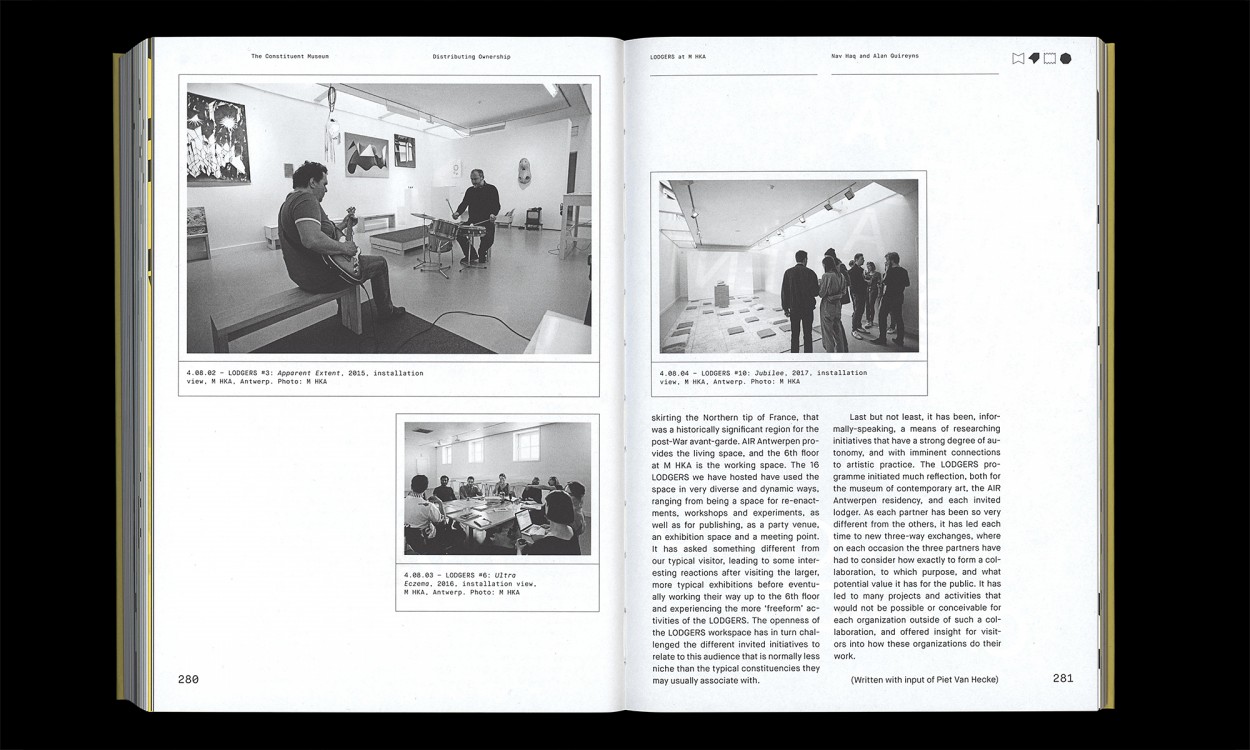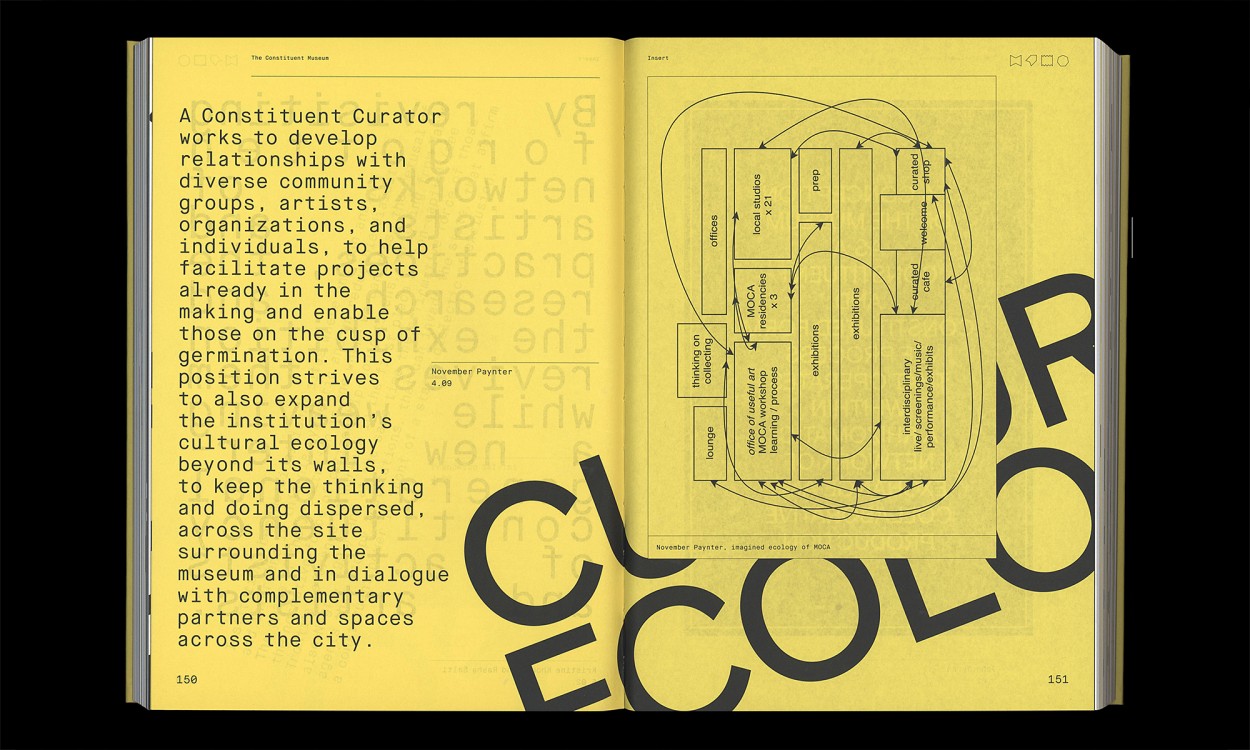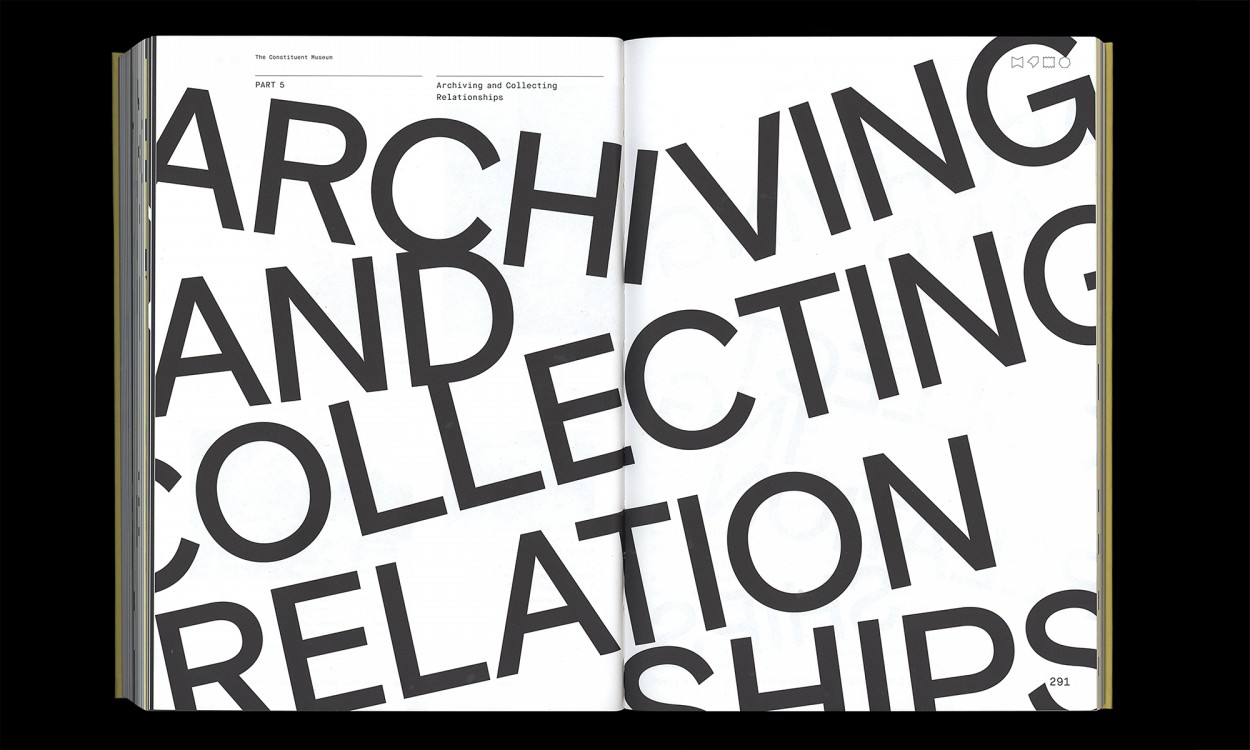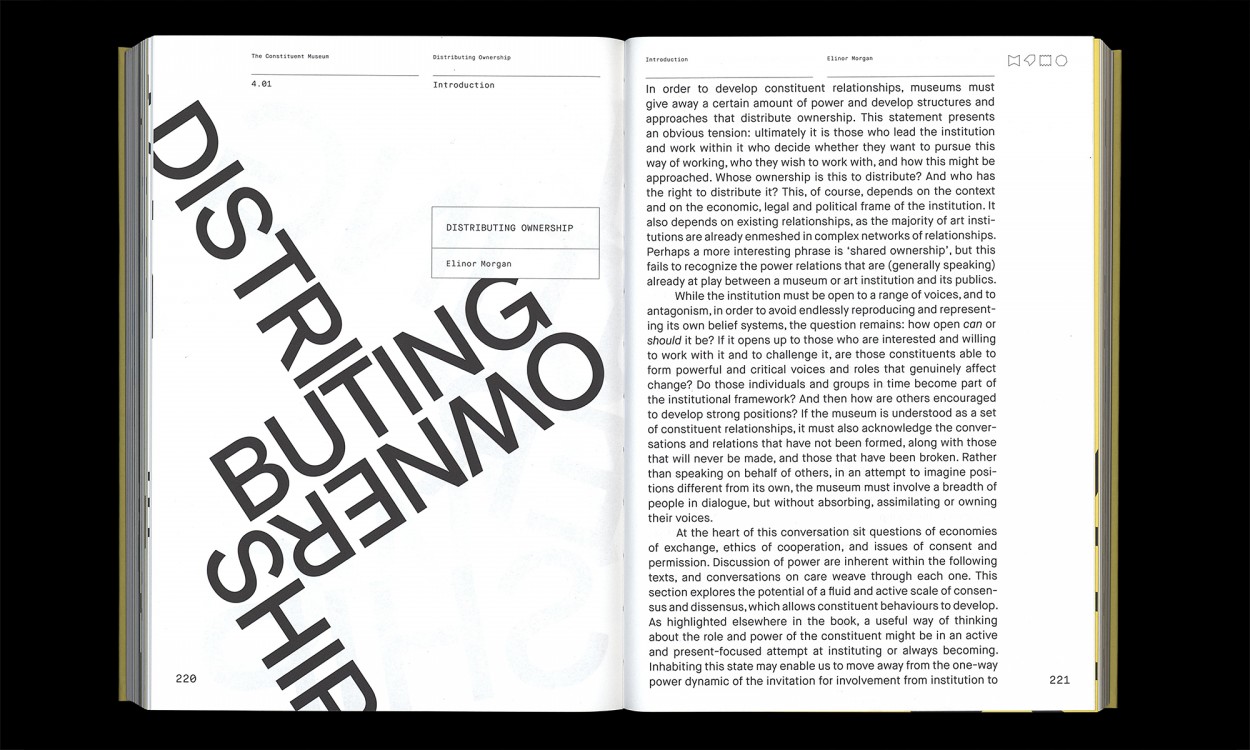The Constituent Museum
Constellations of Knowledge, Politics and Mediation
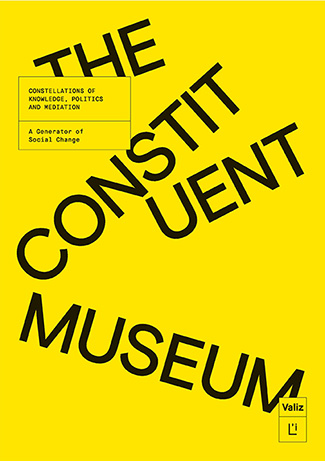
NIET LEVERBAAR
- Herdefinieert de rol en het belang van het museum op een nieuwe manier: als een gezamenlijk, democratisch project van het publiek, de kunstenaar en de museummedewerkers
- Beschouwt het museum als een belangrijk onderdeel van de gemeenschap, waar activisme, geschiedenis, visueel en intellectueel gedachtegoed verzameld en bevraagd wordt
Redactie: John Byrne, Elinor Morgan, November Paynter, Aida Sánchez de Serdio, Adela Železnik
Bijdragen: Azra Akšamija, Alberto Altés Arlandis, Burak Arikan, James Beighton, Manuel Borja-Villel, Sara Buraya, John Byrne, Jesús Carrillo, Alejandro Cevallos Narváez, Céline Condorelli, Sean Dockray, Özge Ersoy, Carmen Esbrí, Oriol Fontdevila, Amy Franceschini, Janna Graham, Nav Haq, Yaiza Hernández Velázquez, Emily Hesse, John Hill, Alistair Hudson, Adelita Husni-Bey, Kristine Khouri, Nora Landkammer, Maria Lind, Isabell Lorey, Francis McKee, Elinor Morgan, Paula Moliner, November Paynter, Manuela Pedrón Nicolau, Elliot Perkins, Bojana Piškur, Tjaša Pogačar Podgornik, Alan Quireyns, RedCSur, Rasha Salti, Francesco Salvini / pantxo ramas, Raúl Sánchez Cedillo, Aida Sánchez de Serdio, Somateca, Igor Španjol, Nora Sternfeld, Subtramas, Tiziana Terranova, Piet Van Hecke, Onur Yıldız, Adela Železnik
Ontwerp: George&Harrison
Serie: LInternationale
2018, Valiz met LInternationale | ondersteund door Liverpool John Moores University, Middlesbrough Institute of Modern Art, LInternationale, KASK School of Arts, Gent, European Union, Culture Programme | hardcover | 384 blz. | 24.5 cm x 17.5 cm (staand) | Engels | ISBN 978-94-92095-42-8
What would happen if museums put relationships at the centre of their operations? This question inspires this publication, which offers a diverse, rigorous, and experimental analysis of what is commonly known as education, mediation or interpretation within museum institutions. It regards the visitor not as a passive receiver of predefined content, but as an active member of a constituent body, whom it facilitates, provokes, inspires and learns from. Moving beyond the practice of mediation as such, the publication situates constituent practices of collaboration and co-production within the existing social-political (neoliberal) context. It does this to reimagine and affect both the physical and organizational structures of museums and galleries.
Understanding the challenges of a constituent practice in an integral, interdisciplinary manner is what this publication aspires to. This is explored by placing the museums constituents—museum professionals, active audience/co-curator, local and political agencies, operational structures and contexts—at the centre of the museum organization and looking at how their positions in society start to shift and change.
Issues that are addressed: ownership and power dynamics, collective pedagogy, pedagogy of encounter, collaboration, assent, dissent and consent, co-labour and co-curation (economies of exchange), precarity, and working with interns, archives and how to activate them, broadcasting, digital cultivation, crowdsourcing, and many other topics.


